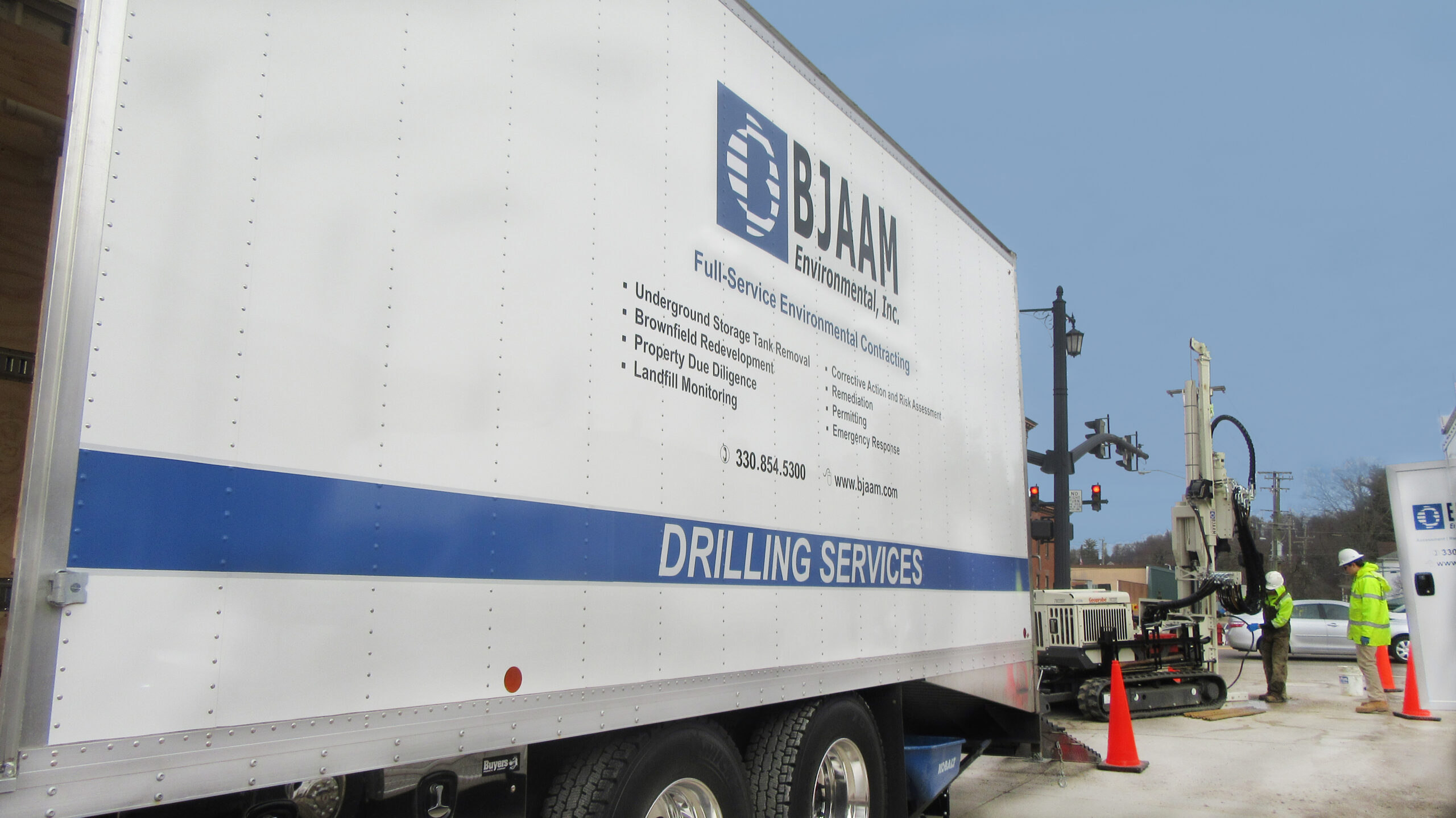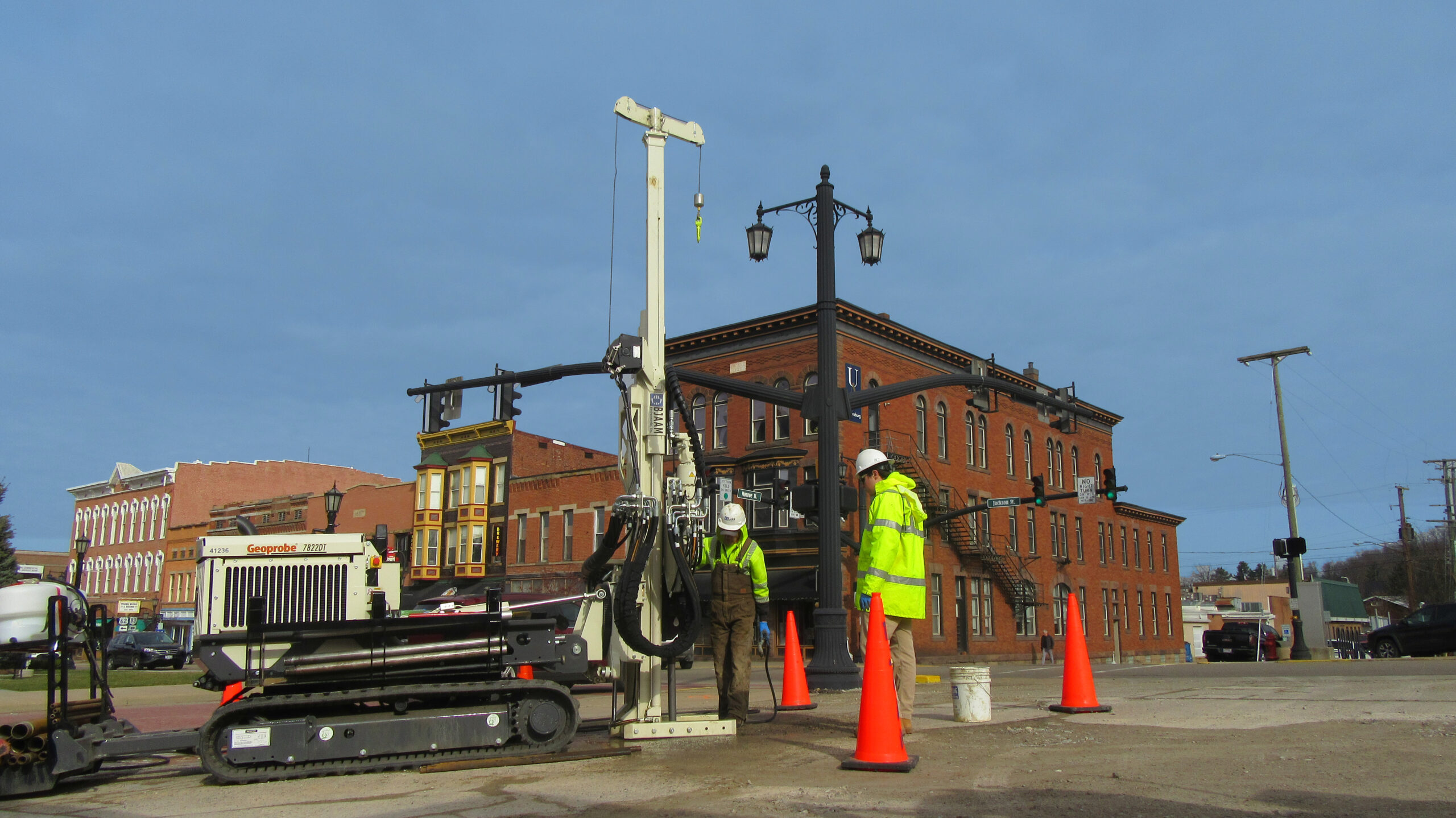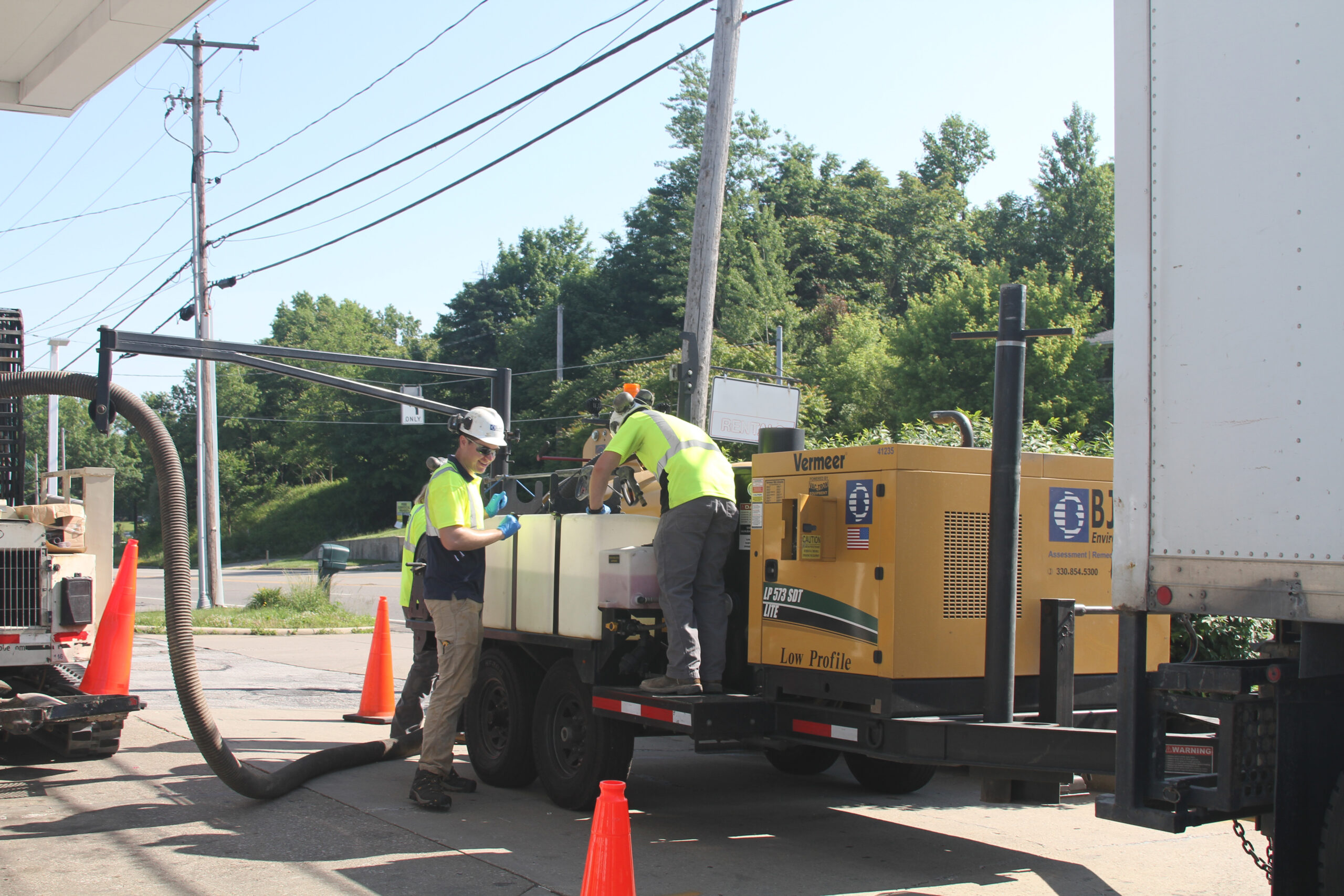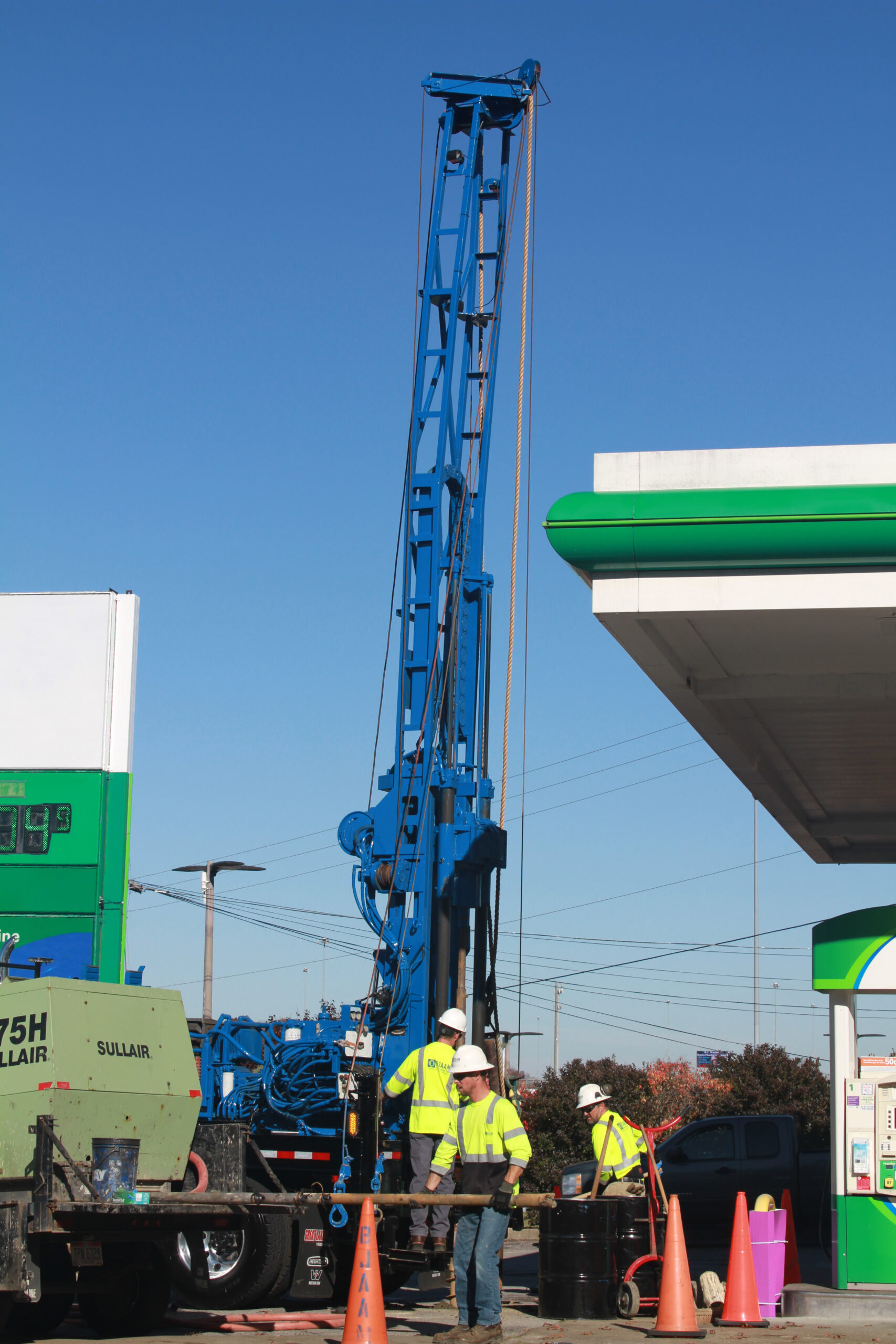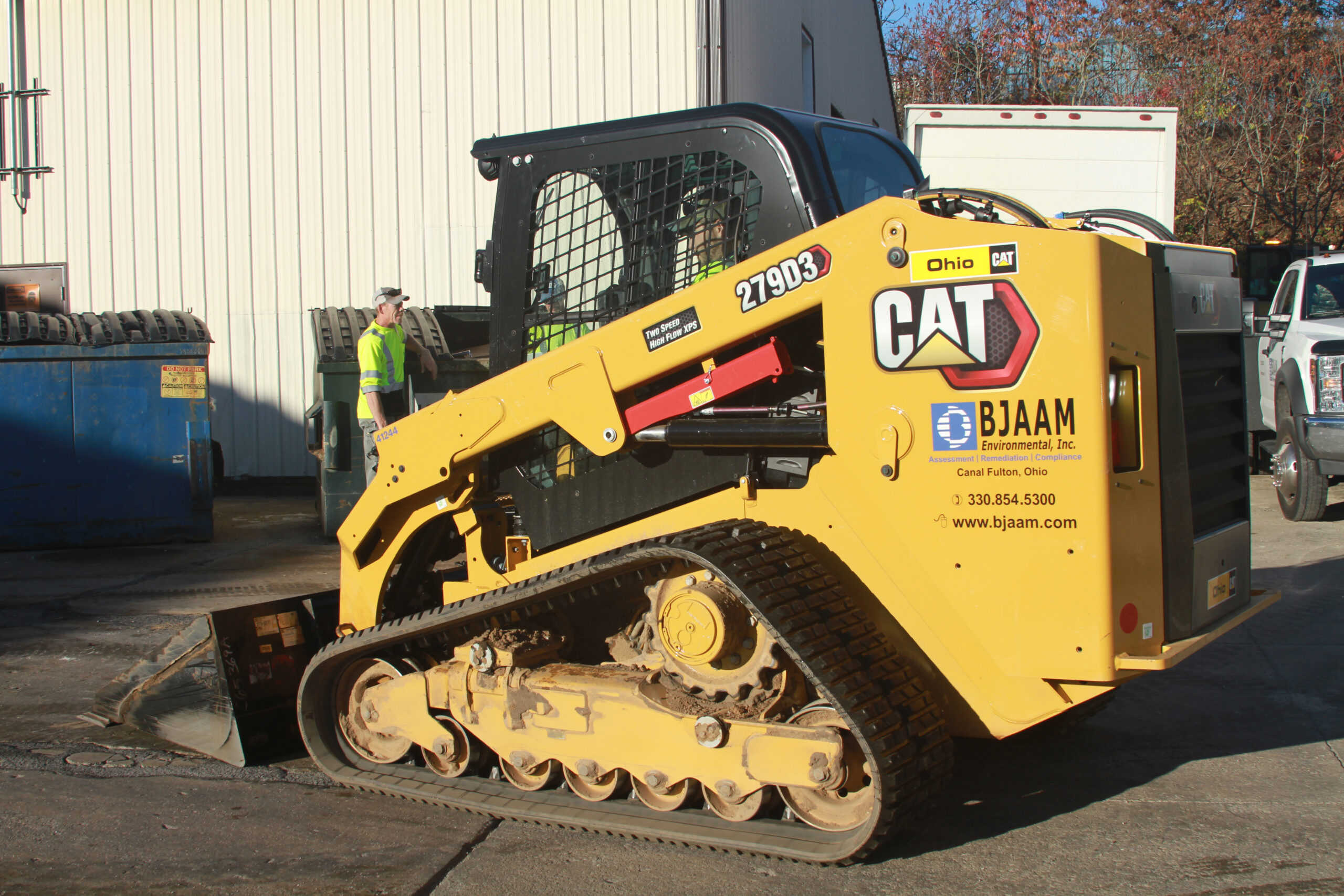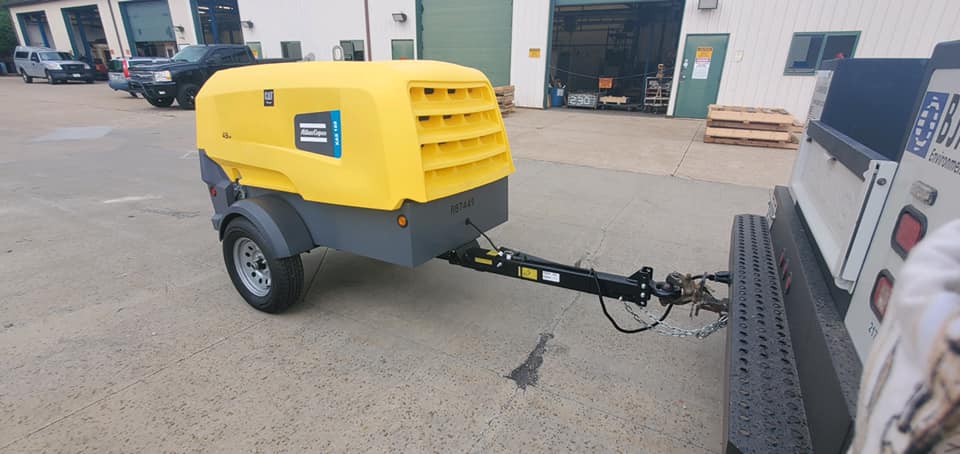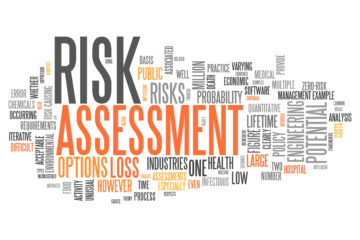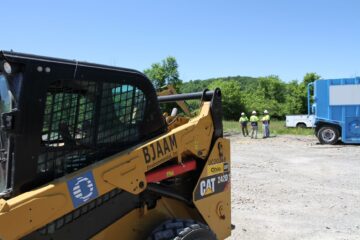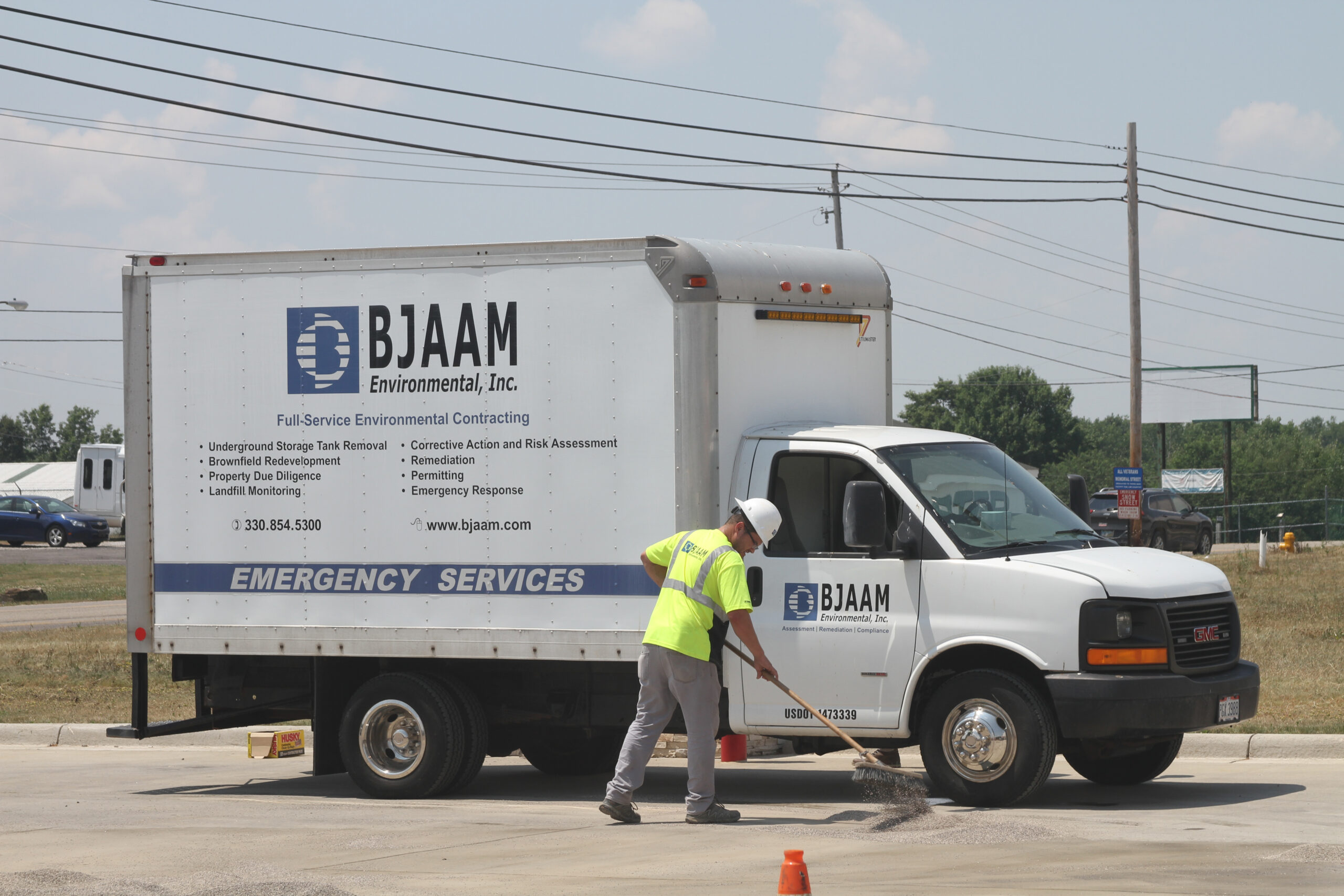BJAAM Environmental, Inc. has grown drastically over the past year. Throughout 2020 we have added new equipment from trucks and trailers to drilling technology. One of the benefits of using updated equipment is heightened safety for our employees and reliable, cost-efficient results for our clients. When traveling, staff can be proud of the vehicle they are driving and the equipment they pull behind them. The increase in BJAAM-owned equipment lowers costs for clients by broadening the capacity of work BJAAM performs in-house with our own machinery, as well as increasing the flexibility of scheduling work that needs done. New equipment that was purchased during 2020 can be found throughout our service area being used by our environmental drilling department, excavation department, and remediation department.
Environmental Drilling Department
Kicking off 2020 was the addition of a Geoprobe 7822DT and a Freightliner M2-106 to transport the new device. The Geoprobe is a small, mobile, direct-push environmental drilling device that is essential for increasing access to areas that would otherwise have limited access due to space or weight restrictions. Reducing the amount of interference during a business’s daily operations and disruptions to traffic flow is another major benefit to using smaller, mobile drilling technology.
Early in the year, a second Vermeer LP 573 SDT LITE (“soil vac”) was purchased to allow multiple teams to have access to needed equipment. Before drilling activities commence, the “soil vac” is used to clear the hole of any possible utilities, such as product lines, electrical lines, gas lines, fiber optic, and water lines. This greatly increases safety, as hitting one of these utilities can be very dangerous and expensive to fix. Other uses for this piece of equipment include to collect dust during air drilling and as a high-power pressure washer. By collecting the dust expelled during air drilling, the exposure to dust inhalation is reduced for our employees, and the clean-up time afterwards is shortened due to the surrounding equipment not getting as dirty.
Our drilling rig geologists welcomed new rides and mobile working stations with a Ford E-350 in February and a Ford E-450 during June. In addition to serving as transportation for our employees and their equipment, these trucks give our geologists a space to prepare soil samples in a consistent and contamination-free environment.
November saw the refurbishing of our Acker Soil Max, and it was then mounted on a new Freightliner M2-106. This piece of environmental drilling technology is capable of both direct push and air rotary drilling. The Soil Max allows us under perfect conditions to drill depths of up to 120 feet for a multitude of purposes, such as the installation of ground water monitoring wells or for sampling soil.
Excavation Department
Trucks with a high towing capacity are often needed during different projects, such as Underground Storage Tank (UST) removals. In May, a new Ford F-350 Dually excavation utility truck was purchased for our Environmental Scientist II/Certified UST Installer. After large USTs are removed, this truck can safely haul them from the job site to the disposal facility. A truck of this size is also useful for bringing BJAAM’s larger equipment to excavation job sites.
During August, an Atlas (CAT) 188 CFM Air Compressor joined the expanding equipment list. This device can fill a variety of roles during a UST removal. One of the many purposes it serves is to “blow back” product piping lines prior to the removal of a UST. Any remaining product is pushed back into the tank during this process, allowing for the safe removal of the tank. Other uses include acting as an eductor or air horn when the UST doesn’t meet the lower explosive limit, as an air nibbler to cut access holes in the tank, or as a drum vac to pump out the remaining contents of the tank into drums for proper disposal.
A CAT 279D3 Track Skid Steer was added to the growing excavation fleet in October. The track skid steer can be used during excavation activities for tasks such as transporting heavy material and leveling areas after resurfacing. Using tracks versus the standard wheels prevents the machine from sinking on soft ground and reduces the amount of disruption on the surfaces it is driven.
The next month, a new Freightliner M2-106 dump truck joined the ranks. Alongside our skid steers and track hoe, this truck enables BJAAM to perform more excavation services solely in-house. Source area removal excavations, emergency response excavations, building demolition and debris removal, dual phase piping excavations and installations, PCS disposals, and backfill and top dressing excavations are some of the projects in which it will be used.
With the addition of new equipment comes a need to get it to the job site. To do so efficiently, BJAAM purchased a 15-ton open bed trailer in November. Fewer trucks will now be needed to pull the same amount of equipment due to multiple pieces of excavation equipment fitting on this single trailer.
Remediation Department
Ensuring our employees have the proper equipment to get each job done can be as simple as making sure there is a reliable vehicle to transport needed supplies and equipment. In November, a new Ford F-350 Dually was bought to serve as a utility truck in the remediation department. For a BJAAM remediation technician, trucks are more than a vehicle; they are where they spend much of their time while out on a job. Their trucks are where they write field notes and data, and where they often spend their lunch hour. Because of this, new, clean trucks can raise our employees’ moral and when moral is high, quality work gets done.
